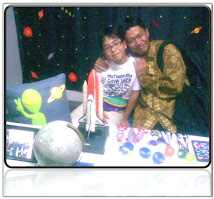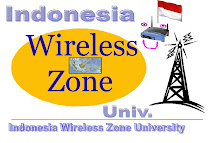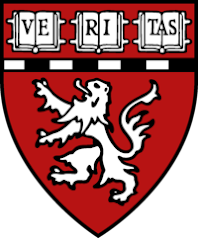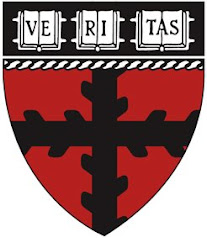Para Dosen dan Guru Kedokteran dan Obat-obatan ASHU All Nobel Laureates in Medicine
Written by Quantum Study Club on 10.44All Nobel Laureates in Medicine
The Nobel Prize in Physiology or Medicine 2009
Summary
This year's Nobel Prize in Physiology or Medicine is awarded to three scientists who have solved a major problem in biology: how the chromosomes can be copied in a complete way during cell divisions and how they are protected against degradation. The Nobel Laureates have shown that the solution is to be found in the ends of the chromosomes – the telomeres – and in an enzyme that forms them – telomerase.
The long, thread-like DNA molecules that carry our genes are packed into chromosomes, the telomeres being the caps on their ends. Elizabeth Blackburn and Jack Szostak discovered that a unique DNA sequence in the telomeres protects the chromosomes from degradation. Carol Greider and Elizabeth Blackburn identified telomerase, the enzyme that makes telomere DNA. These discoveries explained how the ends of the chromosomes are protected by the telomeres and that they are built by telomerase.
If the telomeres are shortened, cells age. Conversely, if telomerase activity is high, telomere length is maintained, and cellular senescence is delayed. This is the case in cancer cells, which can be considered to have eternal life. Certain inherited diseases, in contrast, are characterized by a defective telomerase, resulting in damaged cells. The award of the Nobel Prize recognizes the discovery of a fundamental mechanism in the cell, a discovery that has stimulated the development of new therapeutic strategies.
 | Jack W. Szostak Investigator, Howard Hughes Medical Institute Professor, Department of Genetics, Harvard Medical School Alex. A. Rich Distinguished Investigator, Department of Molecular Biology, Massachusetts General Hospital |
Research
Szostak Lab: Home
Center for Computational & Integrative Biology, Massachusetts General HospitalDepartment of Molecular Biology, Massachusetts General Hospital
Department of Genetics, Harvard Medical School
Replicating Vesicles
RNA Selection
Protein Selection & Genomics

Curriculum Vitae
Bibliography
Lab Web Page
Carol Greider - Daniel Nathans Professor & Director
Molecular Biology & Genetics
725 N. Wolfe Street
603 PCTB
BaltimoreMD21205
Office: 410-614-6506
Fax: 410-955-0831
cgreider@jhmi.edu
Biochemistry, Cellular & Molecular Biology (BCMB)
Cellular and Molecular Medicine (CMM)
Human Genetics and Molecular Biology
Department of Molecular Biology and Genetics3. Elizabeth Helen Blackburn, FRS (born November 26, 1948) is an Australian born biological researcher at the University of California, San Francisco, who studies the telomere, a structure at the end of chromosomes that protects the chromosome. Blackburn co-discovered telomerase, the enzyme that replenishes the telomere. For this work, she was awarded the 2009 Nobel Prize in Physiology or Medicine, sharing it with Carol W. Greider and Jack W. Szostak. She also worked in medical ethics, and was controversially dismissed from the President's Council on Bioethics.
Dr. Elizabeth Blackburn

Blackburn Lab Research
Overview
The research program of the laboratory focuses on telomeres, the structures stabilizing the ends of the eukaryotic chromosomes, and the enzyme telomerase. The mechanisms of telomere and telomerase functions are under study in organisms from yeasts to humans, and in cancers.Research
Work in the Blackburn laboratory concerns the synthesis and function of telomeres, the ends of eukaryotic chromosomes. Telomeric DNA consists of tandem repeats of very simple sequences, one strand of which is synthesized by the ribonucleoprotein enzyme telomerase. Telomerase specifies the sequence of telomeric DNA by using a short sequence within the telomerase RNA moiety as the template for DNA synthesis. Thus, telomeric DNA is unusual in being an essential chromosomal element synthesized by copying an RNA sequence; that is, by reverse transcription.- Harald zur Hausen, Françoise Barré-Sinoussi, Luc Montagnier
- Mario R. Capecchi, Sir Martin J. Evans, Oliver Smithies
- Andrew Z. Fire, Craig C. Mello
- Barry J. Marshall, J. Robin Warren
- Richard Axel, Linda B. Buck
- Paul C. Lauterbur, Sir Peter Mansfield
- Sydney Brenner, H. Robert Horvitz, John E. Sulston
- Leland H. Hartwell, Tim Hunt, Sir Paul Nurse
- Arvid Carlsson, Paul Greengard, Eric R. Kandel
- Günter Blobel
- Robert F. Furchgott, Louis J. Ignarro, Ferid Murad
- Stanley B. Prusiner
- Peter C. Doherty, Rolf M. Zinkernagel
- Edward B. Lewis, Christiane Nüsslein-Volhard, Eric F. Wieschaus
- Alfred G. Gilman, Martin Rodbell
- Richard J. Roberts, Phillip A. Sharp
- Edmond H. Fischer, Edwin G. Krebs
- Erwin Neher, Bert Sakmann
- Joseph E. Murray, E. Donnall Thomas
- J. Michael Bishop, Harold E. Varmus
- Sir James W. Black, Gertrude B. Elion, George H. Hitchings
- Susumu Tonegawa
- Stanley Cohen, Rita Levi-Montalcini
- Michael S. Brown, Joseph L. Goldstein
- Niels K. Jerne, Georges J.F. Köhler, César Milstein
- Barbara McClintock
- Sune K. Bergström, Bengt I. Samuelsson, John R. Vane
- Roger W. Sperry, David H. Hubel, Torsten N. Wiesel
- Baruj Benacerraf, Jean Dausset, George D. Snell
- Allan M. Cormack, Godfrey N. Hounsfield
- Werner Arber, Daniel Nathans, Hamilton O. Smith
- Roger Guillemin, Andrew V. Schally, Rosalyn Yalow
- Baruch S. Blumberg, D. Carleton Gajdusek
- David Baltimore, Renato Dulbecco, Howard M. Temin
- Albert Claude, Christian de Duve, George E. Palade
- Karl von Frisch, Konrad Lorenz, Nikolaas Tinbergen
- Gerald M. Edelman, Rodney R. Porter
- Earl W. Sutherland, Jr.
- Sir Bernard Katz, Ulf von Euler, Julius Axelrod
- Max Delbrück, Alfred D. Hershey, Salvador E. Luria
- Robert W. Holley, H. Gobind Khorana, Marshall W. Nirenberg
- Ragnar Granit, Haldan K. Hartline, George Wald
- Peyton Rous, Charles B. Huggins
- François Jacob, André Lwoff, Jacques Monod
- Konrad Bloch, Feodor Lynen
- Sir John Eccles, Alan L. Hodgkin, Andrew F. Huxley
- Francis Crick, James Watson, Maurice Wilkins
- Georg von Békésy
- Sir Frank Macfarlane Burnet, Peter Medawar
- Severo Ochoa, Arthur Kornberg
- George Beadle, Edward Tatum, Joshua Lederberg
- Daniel Bovet
- André F. Cournand, Werner Forssmann, Dickinson W. Richards
- Hugo Theorell
- John F. Enders, Thomas H. Weller, Frederick C. Robbins
- Hans Krebs, Fritz Lipmann
- Selman A. Waksman
- Max Theiler
- Edward C. Kendall, Tadeus Reichstein, Philip S. Hench
- Walter Hess, Egas Moniz
- Paul Müller
- Carl Cori, Gerty Cori, Bernardo Houssay
- Hermann J. Muller
- Sir Alexander Fleming, Ernst B. Chain, Sir Howard Florey
- Joseph Erlanger, Herbert S. Gasser
- Henrik Dam, Edward A. Doisy
- The prize money was with 1/3 allocated to the Main Fund and with 2/3 to the Special Fund of this prize section
- The prize money was with 1/3 allocated to the Main Fund and with 2/3 to the Special Fund of this prize section
- The prize money was with 1/3 allocated to the Main Fund and with 2/3 to the Special Fund of this prize section
- Gerhard Domagk
- Corneille Heymans
- Albert Szent-Györgyi
- Sir Henry Dale, Otto Loewi
- Hans Spemann
- George H. Whipple, George R. Minot, William P. Murphy
- Thomas H. Morgan
- Sir Charles Sherrington, Edgar Adrian
- Otto Warburg
- Karl Landsteiner
- Christiaan Eijkman, Sir Frederick Hopkins
- Charles Nicolle
- Julius Wagner-Jauregg
- Johannes Fibiger
- The prize money was allocated to the Special Fund of this prize section
- Willem Einthoven
- Frederick G. Banting, John Macleod
- Archibald V. Hill, Otto Meyerhof
- The prize money was allocated to the Special Fund of this prize section
- August Krogh
- Jules Bordet
- The prize money was allocated to the Special Fund of this prize section
- The prize money was allocated to the Special Fund of this prize section
- The prize money was allocated to the Special Fund of this prize section
- The prize money was allocated to the Special Fund of this prize section
- Robert Bárány
- Charles Richet
- Alexis Carrel
- Allvar Gullstrand
- Albrecht Kossel
- Theodor Kocher
- Ilya Mechnikov, Paul Ehrlich
- Alphonse Laveran
- Camillo Golgi, Santiago Ramón y Cajal
- Robert Koch
- Ivan Pavlov
- Niels Ryberg Finsen
- Ronald Ross
- Emil von Behring
 | Posted in »
| Posted in »



















0 comments: Responses to “ Para Dosen dan Guru Kedokteran dan Obat-obatan ASHU All Nobel Laureates in Medicine ”